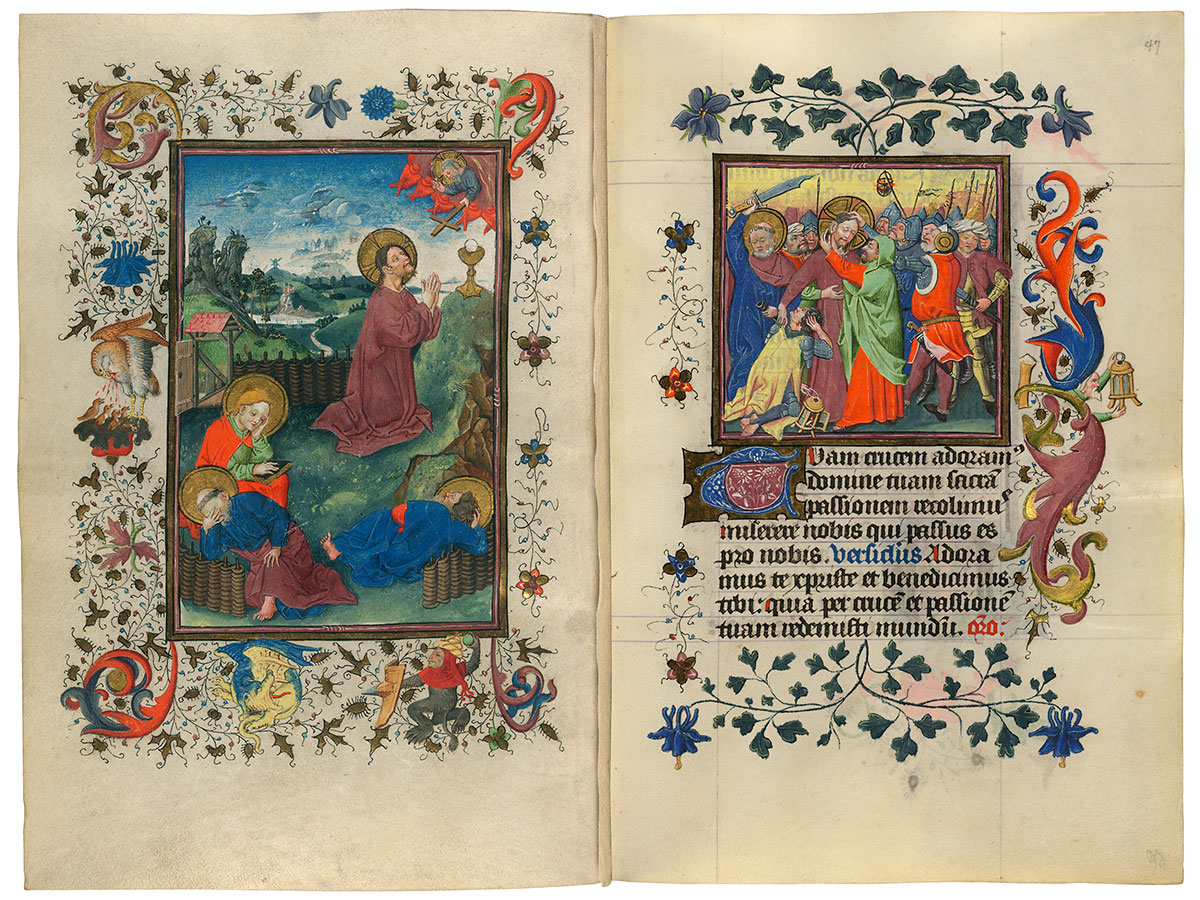
Agony in the Garden
Arrest of Christ
Purchased on the Belle da Costa Greene Fund with the assistance of the Fellows, 1963; purchased on the Belle da Costa Greene Fund with the assistance of the Fellows and with special assistance of Mrs. Frederick B. Adams, Sr., Mrs. Robert Charles, Mr. Laurens M. Hamilton, The Heineman Foundation, Mrs. Donald F. Hyde, Mrs. Jacob M. Kaplan, Mrs. John Kean, Mr. Paul Mellon, Mr. and Mrs. Charles F. Morgan, Mr. Lessing J. Rosenwald, Mr. and Mrs. August H. Schilling, Mrs. Herbert N. Straus, Mrs. Landon K. Thorne, Mrs. Alan Valentine, Mr. and Mrs. Arnold Whitridge, and Miss Julia P. Wightman, 1970
Like the Hours of the Virgin, the Hours of the Passion marked each of its textual divisions with juxtaposed full- and half-page miniatures. Thus Christ's Passion unfolds with a rich suite of sixteen illustrations. The cycle commences with Christ in the garden of Gethsemane. While apostles doze, the Savior beseeches his Father to remove the cup before him. The cup, a chalice containing a communion wafer, symbolizes both his forthcoming death and the Eucharist. The Eucharistic theme is reiterated by the border vignette of the pelican feeding her young with her own blood, a symbol of Christ's sacrificial Death on the Cross. In the next scene, following Judas's kiss, soldiers seize Christ, who calmly replaces the ear that Peter has sliced from Malchus.
Hours of the Passion
The Hours of the Passion are often found in Books of Hours following, as in Catherine's manuscript, the Hours of the Virgin. The lengthy psalms are supplemented with prayers that narrate the story of Christ's Passion. If Catherine had little time, she might pray Matins alone, where the three lessons encapsulate the entire Passion, from Christ's Arrest until his Death on the Cross. A slower meditation is provided by the remaining Hours. The drama begins at Vespers, whose prayer narrates events from Holy Thursday: the Last Super and Christ Washing the Feet of the Apostles. Compline's prayer relates Christ's Agony in the Garden. The prayer at Lauds relates to Christ Before Pilate and Peter's Denial. The Passion concludes with None's prayer telling of Christ's Death on the Cross.
Image courtesy of Faksimile Verlag Luzern
